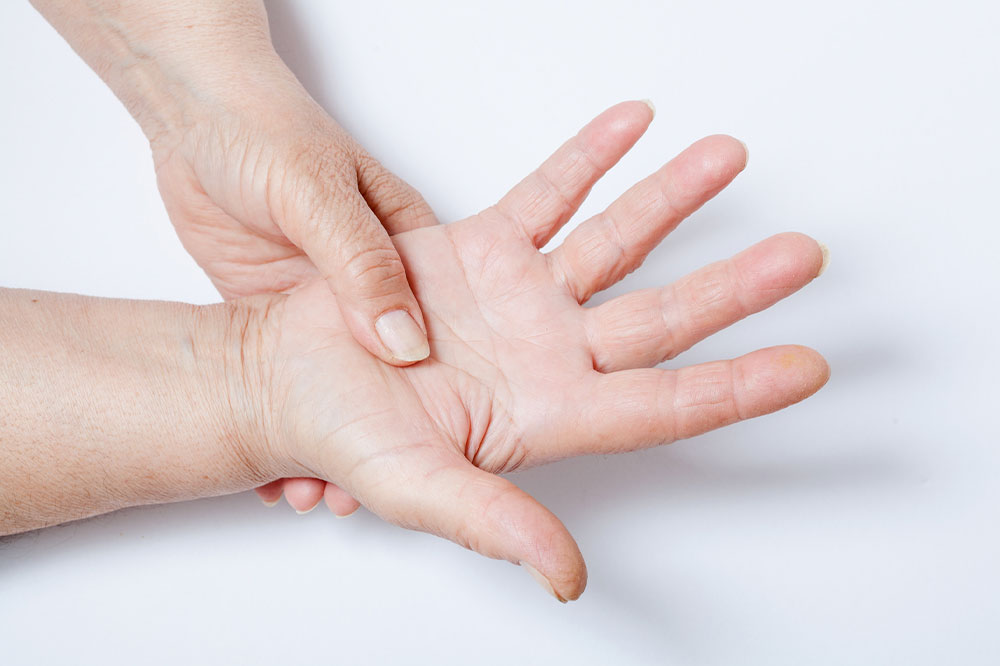
7 factors that trigger arthritis pain
Arthritis is a disorder that causes one or more joints to swell and become tender and inflamed. Joint pain and stiffness are the most typical signs of arthritis. Osteoarthritis, the most common type, is marked by cartilage degeneration. Another type is rheumatoid arthritis, in which the body’s immune system destroys the joint lining. Here are a few things that can aggravate these conditions; hence should be avoided at all costs:
An inactive lifestyle
Engaging in exercises that promote muscular strength and joint health is the first step in coping with arthritis. A sedentary lifestyle hastens the deterioration of the joints and muscles. Understandably, arthritic discomfort may be the driving force behind living a sedentary lifestyle. However, you must find a method to strike a balance between rest and exercise. Physical activity is a crucial part of arthritis management. On the other hand, overstretching your joints may be a risk factor for joint discomfort and wear and tear. While exercising, keep it simple and pay attention to signs of discomfort.
Wearing uncomfortable shoes in the house
When you are at home, take off your regular shoes. Slip on some comfy flat flip-flops or go barefoot. Most shoes and footwear put more pressure on the knees and joints, especially those with high heels. Avoid wearing stockings or socks since they might cause you to slip or fall on smooth surfaces and tiled floors. You can opt for therapeutic shoes; they provide comfort and relief from pain.
Unhealthy food and eating habits
Nutritious, balanced foods help regulate physical and mental functions. Too much or too little can adversely affect those with arthritis symptoms. Blood sugar levels may drop if you’ve missed meals during the day. You must opt for healthy snacks, especially if your condition depletes your energy. Avoid high-calorie foods such as candy bars, cakes, and fast foods. Salt and sugar-rich foods can also trigger arthritis pain. High-fiber carbs and lean protein, such as whole-grain crackers with peanut butter, or yogurt with some sprinkled walnuts, are the best options for sustaining energy and improving joint health.
Poor rehabilitation from osteoarthritis pain might be due to unhealthy meal plans and food choices. Certain meal plans may aid in the recovery from arthritic pain, while others may interfere with the effectiveness of osteoarthritis treatment. Meals high in calcium and Vitamin D, for example, are good for the joints.
Missing treatment options and therapy
Noncompliance with treatment recommendations aggravates arthritis symptoms. To correctly manage arthritis, you must stick to the advised treatment options and therapies. Physical therapy under supervision can assist you in improving joint functions safely and effectively. It is also crucial to maintaining your mobility. It would help you with movement activities such as standing and sitting with the right posture, climbing stairs and walking.
Heavy lifting
Lifting heavy items has a negative impact on the body; it takes a physical toll on your joints. Carrying heavy objects causes imbalances throughout the body, and they cause torque or stress on the joints. It can also lead to cartilage deterioration over time.
Climatic conditions
Weather changes can also trigger arthritis pain or make existing symptoms worse. Also, changes in barometric pressure such as that which occurs just before a storm could cause arthritis symptoms to flare up.
Other factors
Other factors that could cause arthritis pain are mental issues such as depression, stress, and anxiety. When the body is stressed, it releases certain chemicals and hormones that could trigger pain and inflammation. Also, pain that interferes with mobility and daily activities can increase your stress, causing symptoms to fare up. Depression and anxiety can lower your sensitivity to pain and make you feel worse. Hence, managing your mood through breathing exercises, relaxation techniques, and meditation might be useful.
Treatment Options
Tremfya
Tremfya is the first FDA-approved treatment option to suppress interleukin 23 (IL-23), one of the major proteins that are said to be responsible for psoriatic arthritis symptoms. It can aid with joint discomfort, stiffness, and edema, which make daily activities difficult. Tremfya is only available with a prescription and is administered by injection beneath the skin. It is important to note that it can interfere with the functioning of the immune system and increase your risk of infection; hence if you notice any side effects such as fever, muscle aches, shortness of breath, or diarrhea, contact your health care expert immediately.
Actemra
Actemra is an interleukin-6 (IL-6) receptor antagonist that is available with a prescription at most pharmacies. It is used to treat rheumatoid arthritis that is moderate to highly active. It reduces inflammation, as a result of which you may get relief from symptoms or see a general improvement in your health. Mild side effects such as headache or high blood pressure could occur with this treatment option.
Plaquenil
Plaquenil (Hydroxychloroquine Sulfate) is an autoimmune disease (body’s immune system destroys healthy tissue) treatment option. This option limits the symptoms caused by the illness and reduces the ability of the immune system to generate inflammation. Rashes, skin and mouth sores and joint discomfort can all be relieved. However, it can cause mild side effects such as diarrhea, loss of appetite, and nausea.
The joint discomfort and loss of function in rheumatoid arthritis can benefit from surgical techniques that can help relieve pain and restore joint mobility. This procedure is called a synovectomy, however, its effect is temporary. Other procedures such as total joint arthroplasties, especially for the knee, hip, wrist, and elbow, have a high success rate. Consult a specialist for the best treatment options and procedures that suit your condition.


